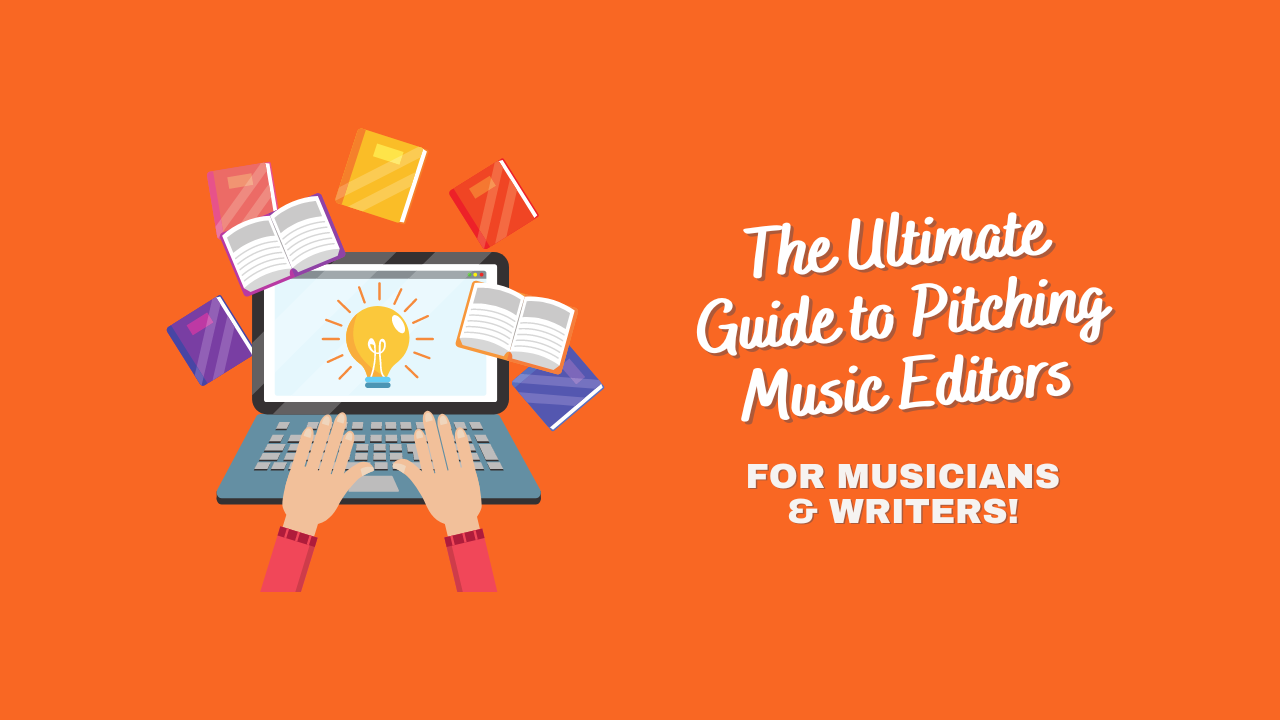Guest Author: Daniela C.
Ever felt like your music or story is getting lost in the crowd? You’re not alone! Music editors are bombarded with pitches daily, so standing out is crucial. Whether you’re an independent musician ready to share your sound with the world or a music writer with a passion for spotlighting new artists, this guide will show you how to craft a killer pitch that gets noticed.
Even as the industry evolves into diverse mediums, press coverage is still super important to artists and music journalists alike. While repeated rejections or unanswered pitch emails may be discouraging, your stories and point of view are needed!
You probably just need a few tweaks in your pitching methods to get published. Ready to turn those rejections into rave reviews? Read on.
Know Who You’re Pitching To
Not all music editors are created equal. Before blasting your email shotgun-style, do some research. Figure out which publications or platforms vibe with your sound/writing style or if they’re even accepting pitches. Check out some of their recent articles and featured artists, and check their submission guidelines.
What genres do they mostly cover or have knowledge about? Also, make sure your voice lines up with their target audience. You don’t want to submit an overly serious story angle to a publication more interested in the latest TikTok dance crazes. For musicians specifically: Seek out publications that have writers and editors that dig your genre and are actively looking for new artists to cover!
Bonus: We can help curate this contact list for you with HAULIX+
Ditch the Generic Greetings
Do not open your email with: “Dear Music Editor”. Editors get slammed with dozens of emails a day, so you NEED to stand out from the crowd. Find the editor’s name and personalize your greeting. Plus, a little effort shows you care – not just about getting featured, but about building a genuine connection. The music industry is ALL about the relationships you build along the way.
Subject Line: The Click-Worthy Hook
Your subject line is the first impression, so please think of something better than “Pitch”. Here is the ideal space to give an overview of what you’d like to be covered, or simply use a working headline. Your email subject should be able to tell as much of your story on its own.
Here are some examples:
“The Haunting Synth-Pop You Didn’t Know You Needed: [Your Artist Name]”
“The Music Producer Who Recorded His Album Underwater: Meet [Artist Name]”
“This Metal-Jazz Fusion Band Toured The World On A Tricycle”
Keep it short, punchy, and relevant. Don’t be too clickbaity, but definitely pique their curiosity. Sometimes you might just have a really wild story to share.
E-mail body: Keep it interesting but to the point
This is where you make your case, but keep it concise. Don’t write your full autobiography but make sure to highlight what makes your pitch different and a worthwhile story to share. Why should people care?
If you’re a writer, here’s where you:
- Introduce yourself, briefly. Include links to some past, relevant stories.
- Include an interesting hook. Was this song recorded in a secluded cabin in the Arctic Circle? Mention this here.
- Try to have most of your angle and story formed already so the editor can see your vision.
- Extra bonus: You could suggest a few interview questions prepared for the artist you’d like to cover.
If you’re a musician:
- Introduce yourself, your band, and genre. Briefly mention what makes your music unique to further grab the editor’s interest.
- Tell them what you’re pitching. Are you offering an exclusive interview with your band or a chance to premiere an upcoming music video? You can also just submit your music for coverage for certain columns or features.
- Include links to your music or a streaming platform where they can easily find the music.
Remember: Editors do not have time to read a novel in their inbox.
Proofread Like a Pro
Typos and grammatical errors scream amateur. Take the time to proofread your email before hitting send. You want to impress editors, not make them question your basic writing skills. It can seem petty but this is the only first impression you’ve got!
Follow Up (But Not Too Much)
If you don’t hear back within a week, a polite follow-up email is fine. But please avoid spamming their inbox. Respect their time, and if they don’t respond, move on and try another editor.
Bonus Tip: Be Social
There is a reason social media is so popular — it works. Follow editors you want to pitch on Twitter or Instagram. Engage with their content, show them you’re a real person with a genuine passion for music. Sometimes, a well-timed comment can lead to an unexpected opportunity. You never know!
Remember, pitching editors takes time and effort. But by crafting a killer pitch and putting yourself out there, you’ll increase your chances of getting your music and stories heard.
If you’re an artist who wants to submit your music to publications, visit HAULIX.com to read more about how HAULIX+ can take the guesswork out of pitching and help you grow your network!

